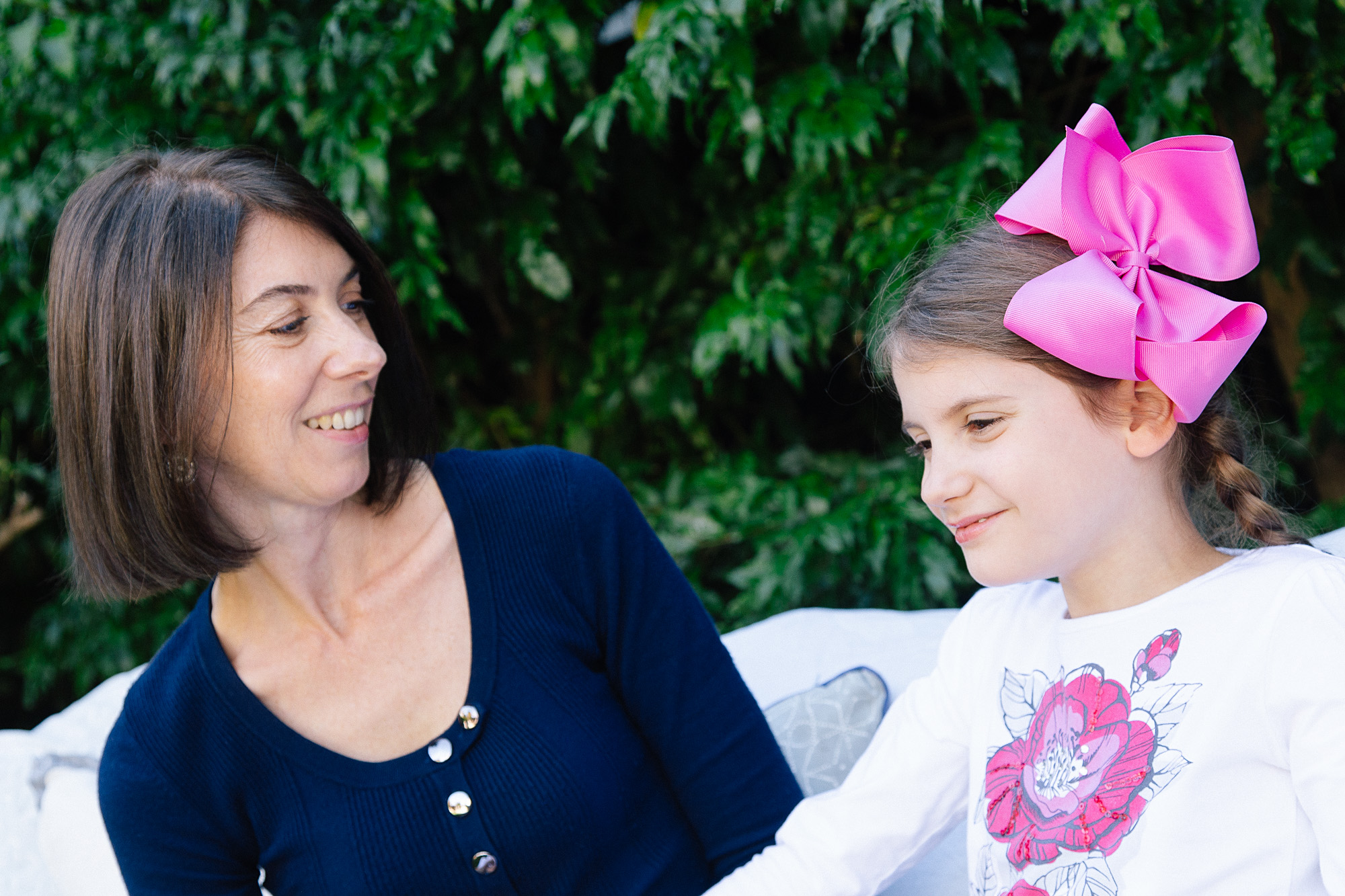When our third child Emily was seven, we met with the neurologist and genetic counsellor at the hospital to get the results of the blood test which would show she had Juvenile Batten disease, also called CLN3 or JNCL. When the doctor gave us the news, he knew that we wouldn’t be surprised by the diagnosis. In fact, the diagnosis almost came as a relief to us. We got this news in May 2017. Until then, it had been a long journey looking for answers.
Emily was born in Singapore where we lived for two years. She was an active baby and was walking by 9 months. Her brother’s preschool teacher described her as a little ‘bright spark’. She was late to talk, but so were her brothers, so we weren’t concerned. And even without speech, she managed to communicate with others and had lots of friends. In the park one day, she went up to another little girl, grabbed the little girl’s hand, gave it a tug, and she had a new friend. We called her our little ‘friend magnet’. Her language progressed but she had ear infections and chronic glue ear which slowed things down. It wasn’t until she was 4 that I started to worry. Although she was happily talking, she often used the wrong word and she wasn’t learning her colours. Her behaviour could also be difficult. The preschool and paediatrician thought I was an ‘anxious’ mother.
Then the ophthalmologist found a Bull’s Eye Maculopathy in her eyes. A Google search of the possible causes led me to Batten disease, which I discussed with the doctors. Soon after, Emily was diagnosed with vision impairment. We were told that Emily had progressive cone-rod dystrophy and that she would lose her vision. They didn’t know how fast she would lose her vision, or how much of it she would lose – just that it was a symptom, not a diagnosis. She was almost 6 at this stage.
Unfortunately, her vision deteriorated rapidly, much faster than anyone had imagined and after just one year she was legally blind. We were sent for many tests and saw other doctors but they didn’t think she had the symptoms of Batten disease and didn’t do the test for CLN3. In hindsight, I think they may have confused CLN2 and CLN3 symptoms because they were asking about seizures and motor decline. These symptoms are common in the early stages of CLN2, but come later in CLN3.
Then, at age 7, further vision tests showed a negative B-wave, which the report said is ‘highly suggestive of Batten disease’ and we were sent to the neurologist where we finally got the diagnosis – almost three years since we had begun to worry and ask questions. I hope that having the new BDSRA Medical and Scientific Advisory Board will help equip doctors to make a quicker diagnosis for others in the future.
Our lives have changed since that day. After the initial relief, we were left with a sense of hopelessness. Yes, now we had answers, but our child had been diagnosed with a terrible, degenerative and eventually fatal condition with no cure. We started googling again, looking for a cure or therapy that might make a difference. And we got in contact with doctors and experts in Europe. They didn’t have a cure for us, but their message was to teach her as much as we can while she is young and to find opportunities despite the limitations. So, our focus has changed to helping her learn and to giving her the opportunities and supports she needs to compensate for her current and future loss of skills.
Since Batten disease is a form of childhood dementia, these children have a different learning curve to other children, even other disabled children. Therefore, it has been difficult finding the right educational and therapeutic supports in Sydney. I have had to become the expert in many of Emily’s needs which has been very stressful and time-consuming. The research shows that there is a ‘window of opportunity’ for learning important skills and ‘what is not done today may not be possible to achieve tomorrow’. In the time I have been trying to learn what is needed and to get good supports in place, our ‘window of opportunity’ for learning has closed a bit more. These lost opportunities make us feel very sad, frustrated and angry. However, if we stop and dwell on these thoughts, we will miss more opportunities. So, we just have to keep going and do the best we can. I am glad that BDSRA Australia is working hard to build a network of supports for families.
While we desperately hope a cure will come in time for Emily, we have to focus on her quality of life too. We know this is going to be a long and difficult journey.
 />
/>